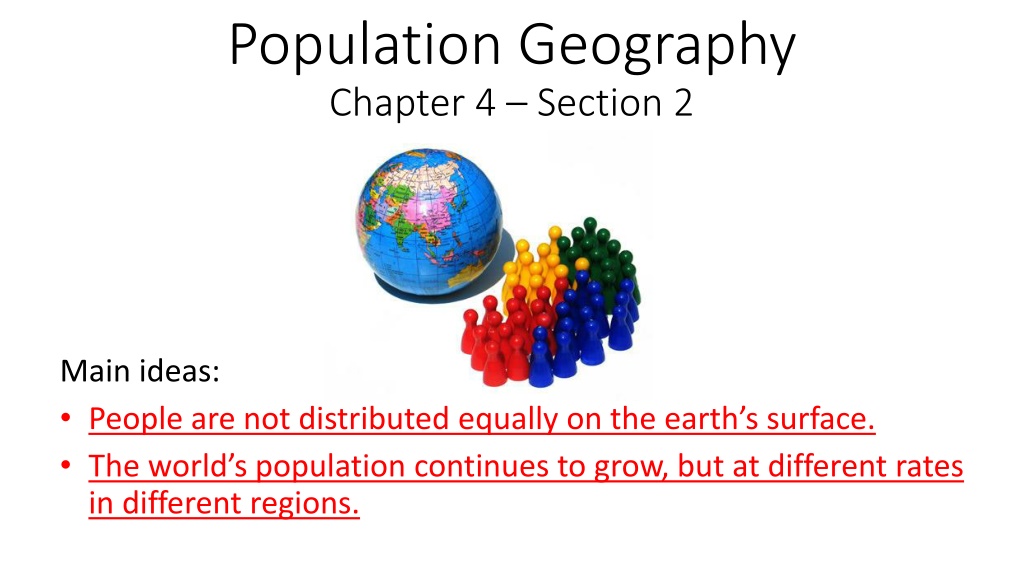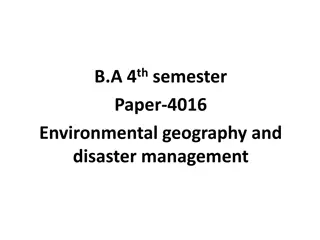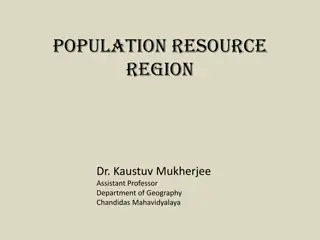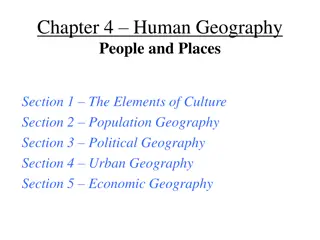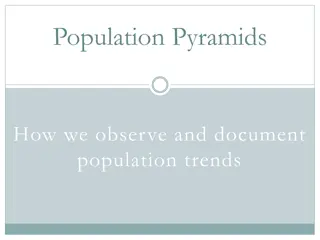Understanding Population Geography: Key Concepts and Trends
Explore the dynamics of global population distribution, growth rates, birth rates, fertility rates, mortality rates, and factors influencing migration patterns through engaging visuals and informative explanations.
Download Presentation

Please find below an Image/Link to download the presentation.
The content on the website is provided AS IS for your information and personal use only. It may not be sold, licensed, or shared on other websites without obtaining consent from the author. Download presentation by click this link. If you encounter any issues during the download, it is possible that the publisher has removed the file from their server.
E N D
Presentation Transcript
Population Geography Chapter 4 Section 2 Main ideas: People are not distributed equally on the earth s surface. The world s population continues to grow, but at different rates in different regions.
Worldwide Population Growth Skillbuilder: Interpreting Graphs (pg. 78) 1. Analyzing Data How long did it take for the population to reach one billion? 2. Making Generalizations How have the intervals between increases changed?
Birthrates: the number of live births per thousand population.
Fertility rate: the average number of children a woman of childbearing years would have in her lifetime.
Mortality rate (death rate): the number of deaths per thousand people.
Infant mortality rate: the number of deaths among infants under age one per thousand live births.
Population pyramid a graphic device that shows sex and age distribution of a population.
Rate of natural increase: the rate at which population is growing. Subtract the mortality rate from the birthrate.
Population Distribution Population Distribution Almost 90 percent of the world s population lives in the Northern Hemisphere. Habitable lands: almost two-thirds of the world s population lives in the zone between 20 N and 60 N latitude.
Push-pull factors: reasons for migrating. Push factors are those that cause people to leave their homeland and migrate to another region. Pull factors draw or attract people to another location.
Population density: the average number of people who live in a measurable area, such as a square mile.
https://www.youtube.com/watch?v=nLfwuPKOrpA Is the growing population a problem? Why or why not? Should there be laws that control the amount of children families are allowed to have?
